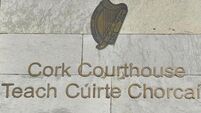Planting seeds of food and folklore
People are reporting a better than usual crop of blackberries and are attributing the rich harvest to the fine summer, boosted by increased moisture in September. It has also been an excellent year for wild mushrooms and orchard apples are tasting well, too.
Berries of all kinds appear to be growing in favour with food lovers and food experts, not only for their taste but also for their health-giving properties.














